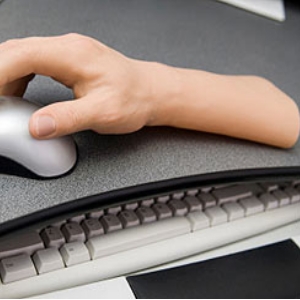
For an amputee, replacing a missing limb with a functional prosthetic can alleviate physical or emotional distress and mean a return of vocational ability or cosmetics.
Studies show, however, that up to 50% of hand amputees still do not use their prosthesis regularly due to less than ideal functionality, appearance, and controllability. But Silvestro Micera, of the École Polytechnique Fédérale de Lausanne (EPFL) in Switzerland, is paving the way for new, smart prosthetics that connect directly to the nervous system. The benefits are more versatile prosthetics with intuitive motor control and realistic sensory feedback—in essence, they could one day return dexterity and the sensation of touch to an amputee.
Improved sensory feedback
At the 2013 Annual Meeting of the American Association for the Advancement of Science (AAAS) in Boston, Micera reports the results of previous work conducting a four-week clinical trial that improved sensory feedback in amputees by using intraneural electrodes implanted into the median and ulnar nerves.
This interface holds great promise because of its ability to create an intimate and natural connection with the nerves, and because it is less invasive than other methods. It also provides fast, intuitive, bidirectional flow of information between the nervous system and the prosthetic, resulting in a more realistic experience and ultimately improved function.
"We could be on the cusp of providing new and more effective clinical solutions to amputees in the next years," says Micera, who is Head of the Translational Neural Engineering Laboratory at EPFL and Professor at the Scuola Superiore Sant'Anna in Italy. Micera and colleagues tested their system by implanting intraneural electrodes into the nerves of an amputee. The electrodes stimulated the sensory peripheral system, delivering different types of touch feelings.
Then the researchers analysed the motor neural signals recorded from the nerves and showed that information related to grasping could indeed be extracted. That information was then used to control a hand prosthesis placed near the subject but not physically attached to the arm of the amputee.
At AAAS in Boston, Micera also describes his recent activities to improve the efficacy of this approach and announces a new clinical trial starting soon as part of the Italian Ministry of Health's NEMESIS project, under the clinical supervision of Prof. Paolo M. Rossini. This new trial carries this research a step further by connecting the prosthetic hand directly to the patient for the first real-time, bidirectional control using peripheral neural signals. Though results are not yet available, the researchers hope to find still further improvement in the sensory feedback and overall control of the prosthetics with this new method.




 Publications
Publications
 Partners
Partners













